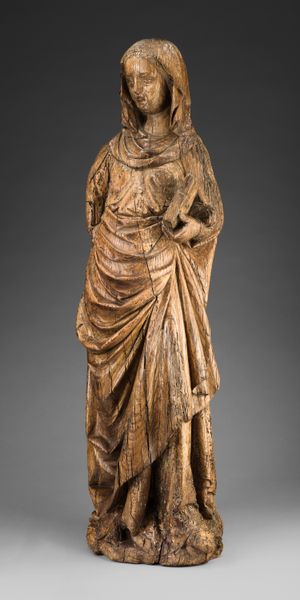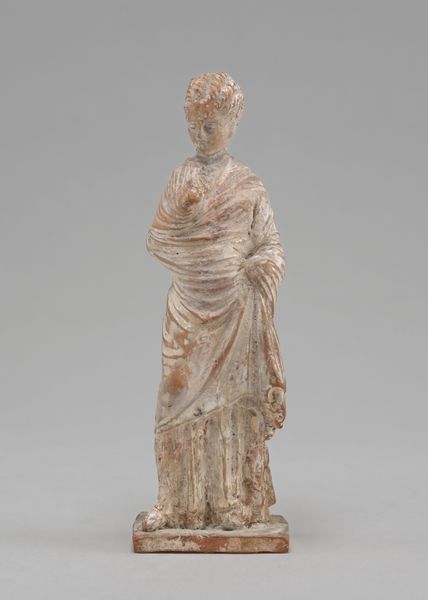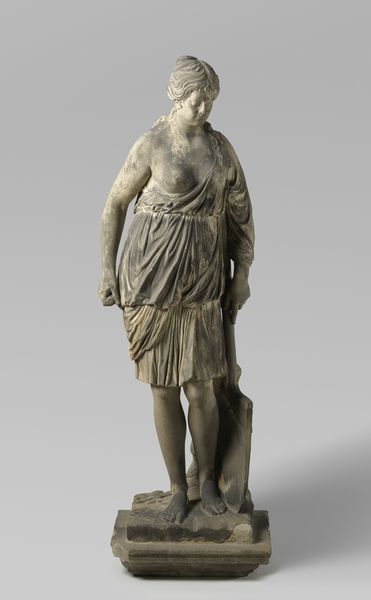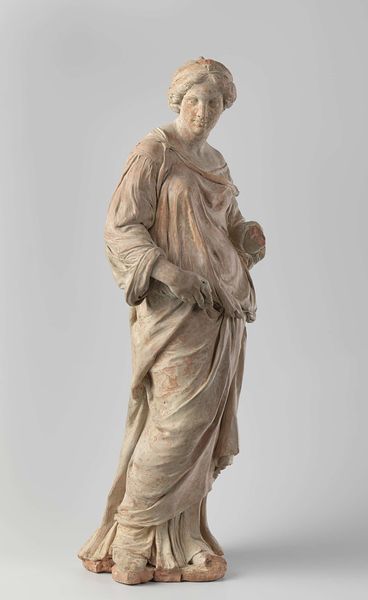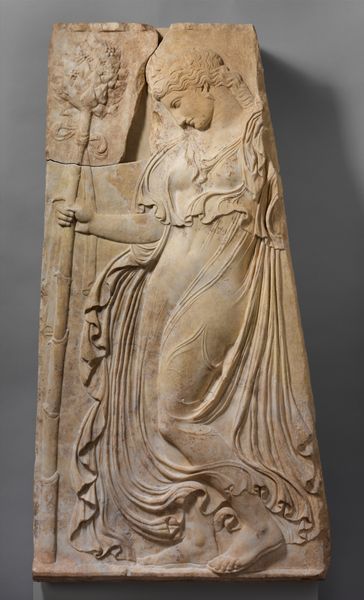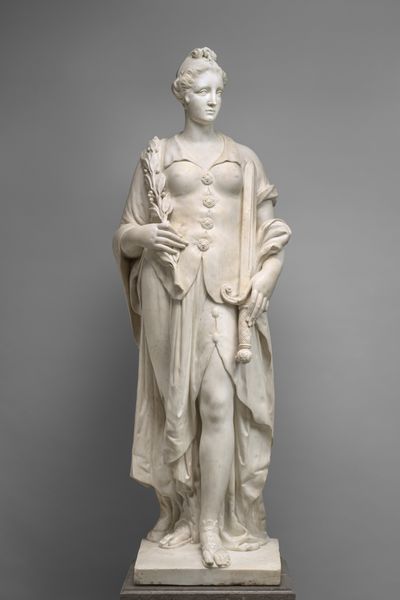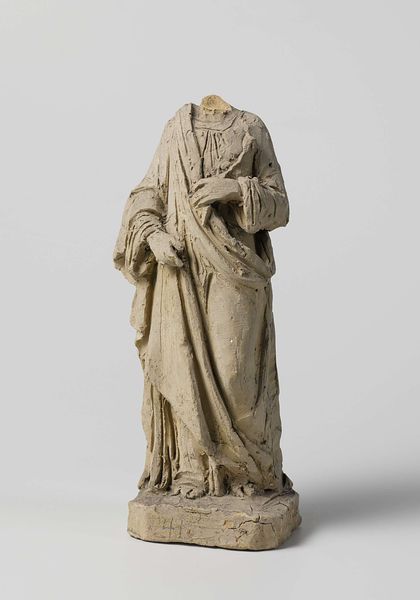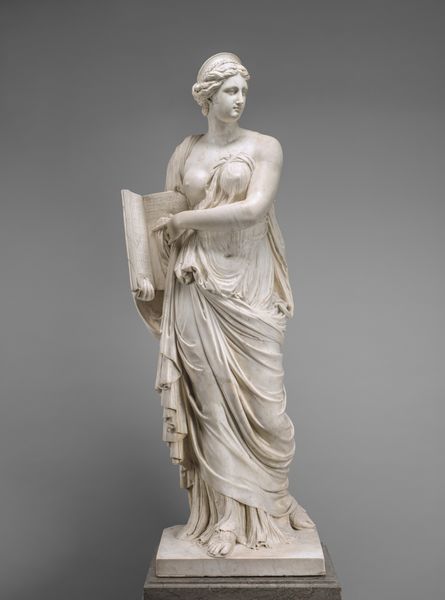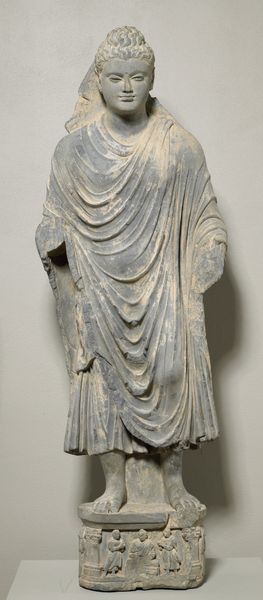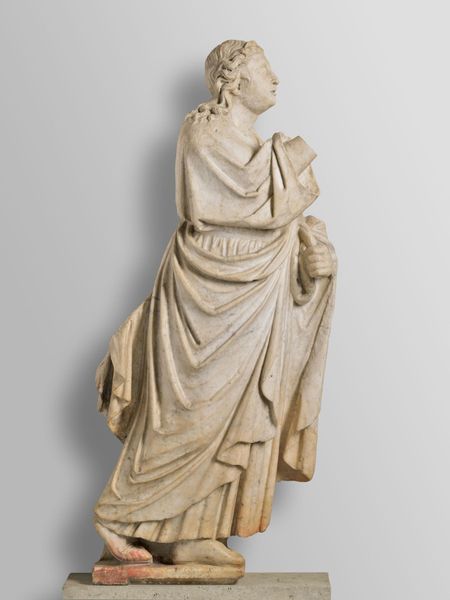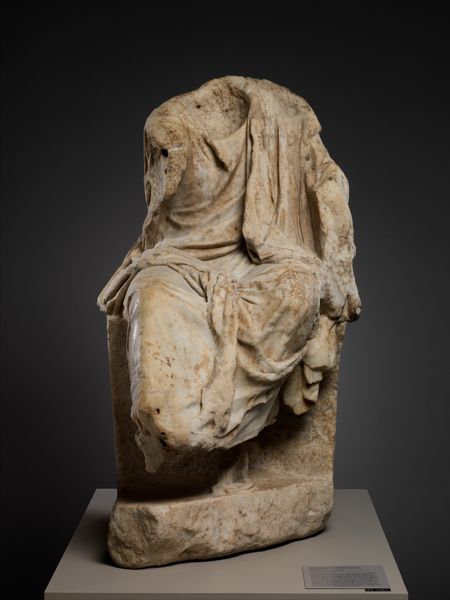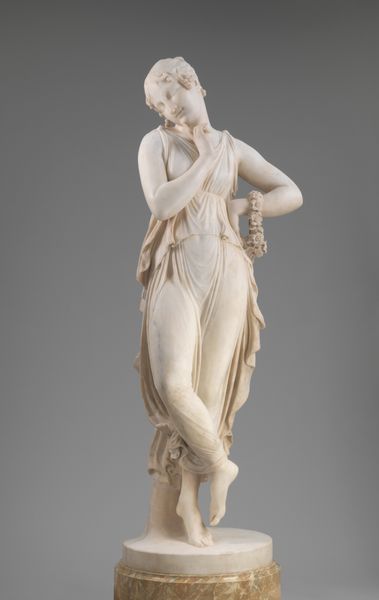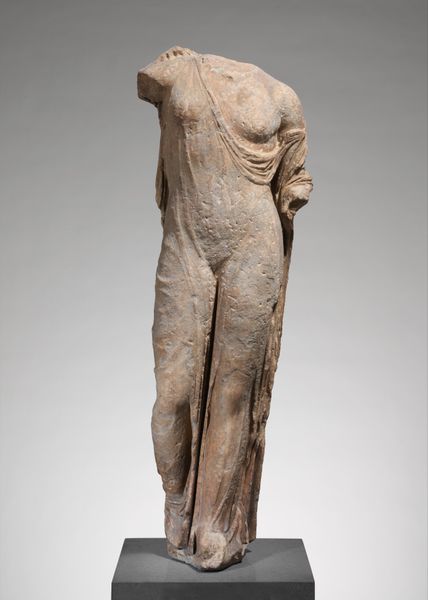
Marble statue of Eirene (the personification of peace) 10 - 70
0:00
0:00
sculpture, marble
#
portrait
#
sculpture
#
greek-and-roman-art
#
classical-realism
#
figuration
#
roman-art
#
ancient-mediterranean
#
sculpture
#
marble
Dimensions: H. without plinth 69 3/4 in. (177.2 cm)
Copyright: Public Domain
Curator: It is with a somber delight that I introduce Kephisodotos' marble sculpture, "Eirene (the personification of peace)", dating back to 10-70 AD, housed here at the Metropolitan Museum of Art. It radiates a muted quietness, don't you think? Almost a gentle sigh etched in stone. Editor: A sigh indeed, though more from exhaustion, I suspect. The sheer physicality of carving marble at that scale! And think of the quarries, the transportation, the workshop filled with artisans shaping her—peace isn’t free, not in marble anyway. Curator: Perhaps you're right, there's a tangible weight there. The way the drapery clings, suggesting the form beneath, yet obscuring it too. She feels burdened, even. Did you know some believe this is a Roman copy of a Greek original? Editor: That’s fascinating, how a concept shifts hands, empires even, yet endures. And the marble itself-- where did it come from? Each vein tells a geological story, predating any empire or idea of peace. This Roman take on Greek peace becomes a luxury object. The labour invested and displayed becomes a spectacle for those enjoying said peace. Curator: I love that, framing "peace" as labor. She represents this idealized concept, yes, but the very material and its crafting speak to tangible efforts and resources. Her missing head leaves so much to the imagination; what expression did the artist initially intend? Is this loss a second burden? Editor: Absolutely, her missing head allows for modern eyes to rest, quite literally, on its construction; of material reality as a form of representation. It compels us to see past romanticised projections toward understanding labor in all forms, as essential to producing meaning within art. Curator: An important distinction, and something to hold when stepping back from this evocative piece. What stays with me, ultimately, is her paradoxical presence: monumental, yet vulnerable, complete and somehow incomplete. Editor: For me, the knowledge of collective labour transforms a sculpture that promotes imperial peace to embody far grander dimensions in its material state and physical making; art then exists because people make it.
Comments
No comments
Be the first to comment and join the conversation on the ultimate creative platform.
